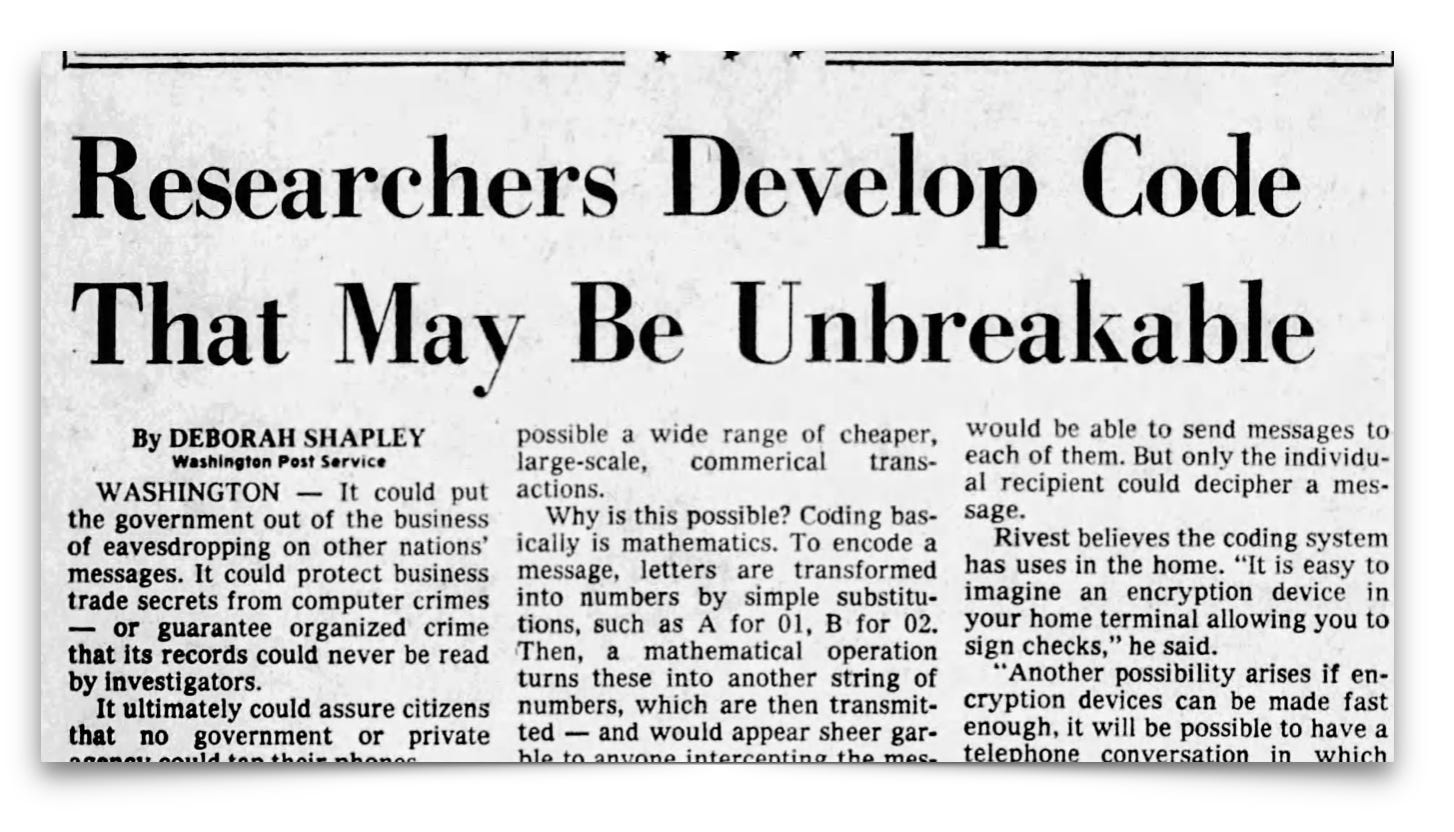The UK Invented Modern Encryption, then Kept it Secret
Apple and the UK government are now in a pitched battle over encryption, which reminded us of a forgotten detail of encryption history…
The UK Intelligence Agency GCHQ invented ‘Public Key Encryption’—a method we use everyday to ensure digital privacy. However, it kept the discovery classified for decades - reportedly hesitant to use it - unsure if it was fool proof.
It was this secrecy that left US researchers at Stanford to discover the method independently in 1976, followed by MIT researchers who patented a simpler, more practical form of public key encryption a few years later. Subsequently the United States got all the credit for the general discovery…

…until 1997 when UK Prime Minister Tony Blair declassified documents about the breakthrough in a bid to prove the countries ability to innovate.
The declassified report from 1970, titled ‘The Possibility of Secure Non-Secret Digital Encryption’ posited what at the time was unthinkable: a form of encryption that didn’t require the recipient to first receive a decryption key physically or over an insecure line.
It was written by British Intelligence employee James Ellis, who initially considered the entire notion impossible, from Wired:
"It was obvious to everyone, including me," he later wrote, "that no secure communication was possible without a secret key, some other secret knowledge, or at least some way in which the recipient was in a different position from an interceptor. After all, if they were in identical situations, how could one possibly be able to receive what the other could not? Thus there was no incentive to look for something so clearly impossible."
Only when Ellis came across a novel form of obscuring and decoding phone calls by introducing and removing noise, developed secretly by Bell Labs in the 1940s - did he begin to think there might be a way.
The Bell Labs paper inspired an epiphany for Ellis in 1969, leading to a concept for what would come to be called Public Key Encryption. It would be further improved by his colleagues Clifford Cocks, and Malcolm Williamson - all three would see American researchers crowned the first to pioneer the methods.
The UK government declassification came at a time when the western world was grappling with encryption generally and governments were trying to control its use. In the run up to 1997 UK general election that elected Tony Blair, GCHQ was pressuring the UK government to outlaw public key encryption, unless it held everyones ‘private keys.’ Similar efforts were taking place in the United States.
Years earlier in 1991 - then Senator Joe Biden - accidentally kicked off the ‘encryption wars’ after pushing to outlaw encrypted email. We wrote about it here:
This gave programmer Phil Zimmerman the motivation to finish and release his open source public key encryption project ‘Pretty Good Privacy’ (PGP.) PGP would spread rapidly - and make it impossible for governments to control its use. As the personal computer market grew, and then the internet - so did demand for encryption.
UK intelligence continued to pressure the Blair Government to outlaw public key encryption, unless it had copies of the private keys for decryption - it was seriously considered. However, in 1999, the UK government would back down.
In 2000 the US patent for the MIT researchers Public Key Encryption system - one that was practical for use on the internet - expired, allowing its widespread free commercial use in the US and US tech companies.
The technology is now used by billions of people everyday - including you right now. However, 26 years later encryption is again under attack in the UK, proving that this war will never end and the battles will keep coming.







